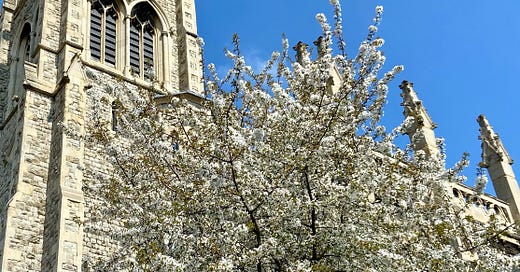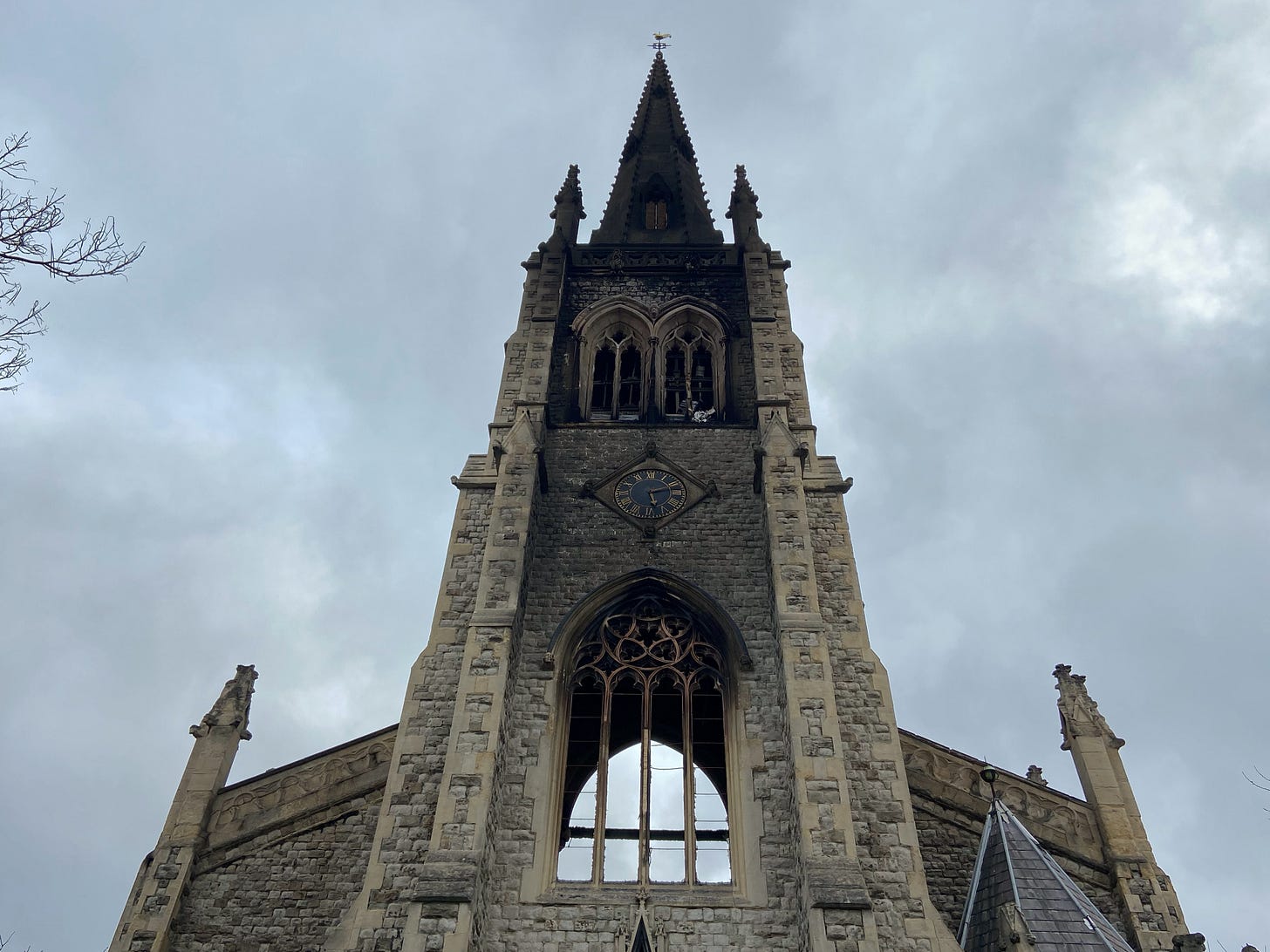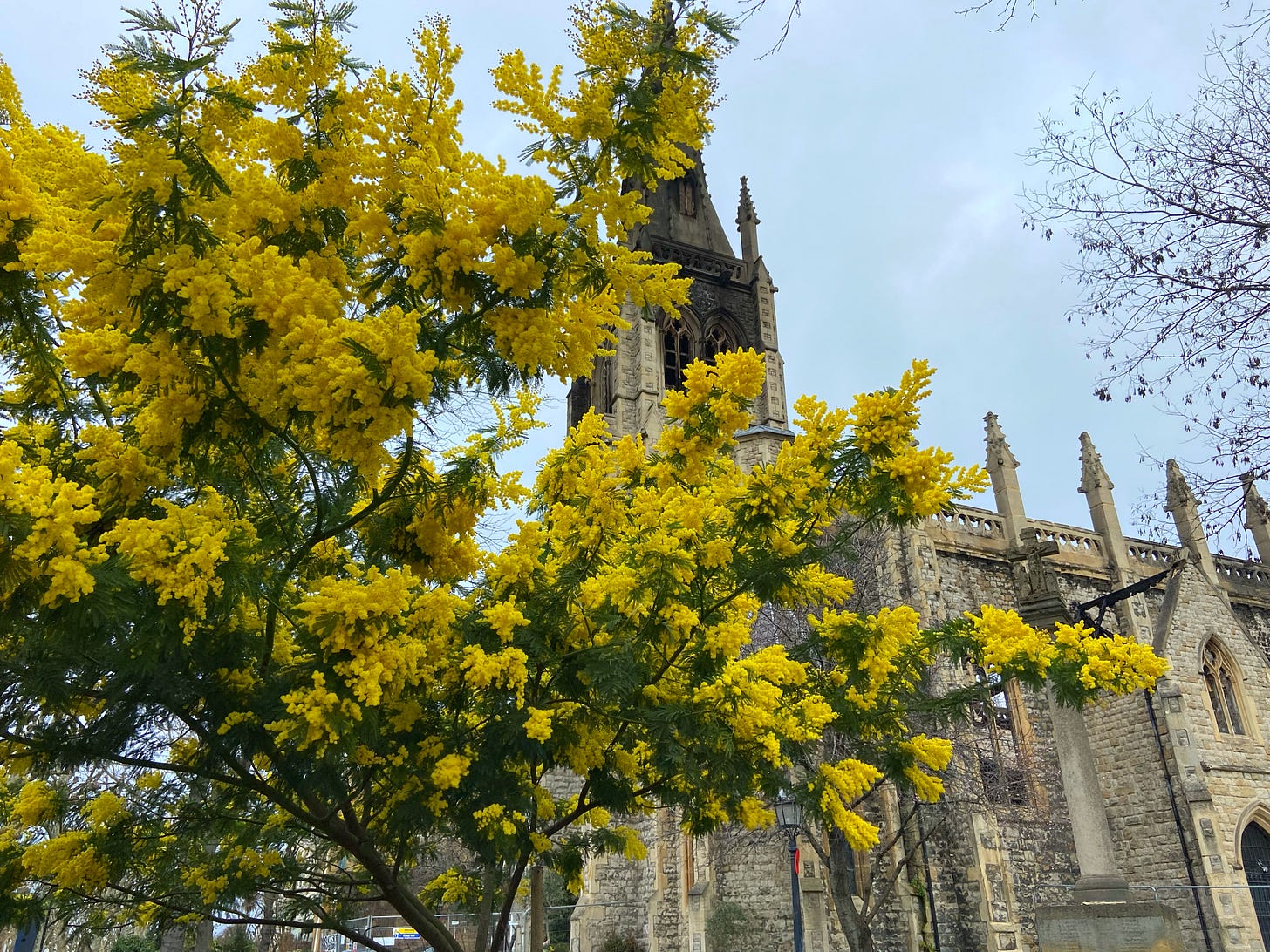My neighborhood church is currently roofless, its masonry blackened and sooty. A month ago, the church caught on fire—a blaze that took eighty firefighters and the tallest ladder in Europe to extinguish.
The church preens above my neighborhood on a gentle hill. It’s a handsome building, its warm grey stone pleasantly in contrast to its Gothic style. It’s over 175 years old, yet it was—until recently—pristine in appearance, thanks to England’s robust protections for historic buildings. Walking along the area’s crescent-shaped streets, you can see the church rising above the mansion blocks. Standing in the Tesco parking lot or outside the local cinema, you can see its steeple peeping above rooftops. I can even see it now, looking out the window beside my desk. It was in this way that the church became a strange, comforting obelisk to me.
In my first months of living in London, I found myself drawn to this church. What caused that feeling? I’m still not sure. I knew I liked the look of the church, simple and beautiful. I liked the golden sheen of the cast rooster atop its steeple. I liked its small garden, with trees that bloomed with soft pink flowers in April and leafed a vibrant green in summer.
At some point, I began to walk to the church when I needed reassurance. I’d stand before the façade, look up toward the steeple, and chant a private hope. I wouldn’t call this prayer, as much as it appeared to be. The habit was born out of silly superstition, at first, done with casual, self-aware irony. But then it grew into practiced ritual. When I began querying my novel to agents, I started my mornings by walking over to the church and hoping for a positive reply.
Now the church has burnt down. I approached its familiar stone wall on a weekend morning, but I quickly noticed something was wrong: the stained windows didn’t glint in the sun, and the steeple was smoke-faded. Then I saw the police tape cordoning off the garden. I stared, dumbstruck, at the now-useless stonework.
I felt sad, and then I felt foolish for feeling sad. Certainly, there were others to whom the church mattered deeply: the vicar, the congregation... not me. Yet, when I returned home, I read every article about the fire that I could find. There were mentions that the building was structurally unsound, that it may have to be demolished for safety reasons, despite its preservation status. I worried about the rebuilt church that might take its place: something modern and soulless. I wondered if the resonance of that now-familiar corner on top of the hill would be lost.
Reading a Guardian article, I learned something else: that the church housed mosaics from the Salviati family, an old-blood Florentine family. In the strangest of coincidences, one of the key characters from my novel is from that same family.
So, was I drawn to the church on some metaphysical level? I remain doubtful. I do think I simply enjoyed the beauty of the building, but I’m also coming to believe that certain places do hold special resonance for us—for whatever reason that may be.
There’s no proper resolution to this letter. I don’t know if the Salviati mosaics survived the fire. I don’t know if the church will be repaired or rebuilt. I don’t know if I’ll feel the same way, once I sit in its garden again. I don’t know what the ending will be, if there even is an ending to this story. But late winter in London is a time of unexpected blooms, and on my walk past the church this morning, the tree in its garden was an implausible, beautiful riot of color. And that was a gift.
What I’m reading: God, how I loved Emily St. John Mandel’s Sea of Tranquility (but please read Station Eleven first!). Also listening to the audiobook of Thomas Dyja’s New York, New York, New York: Four Decades of Success, Excess, and Transformation and it is fascinating history, very well told.
What I’m watching: Very, very late to realizing the greatness of BBC’s Happy Valley. I also saw the recent All Quiet on the Western Front, and it’s very good!






